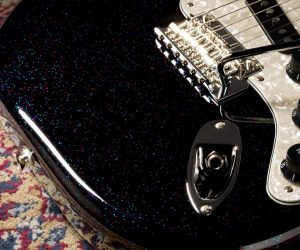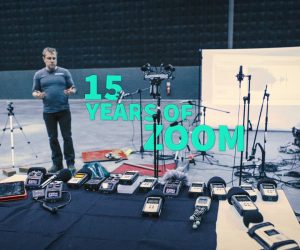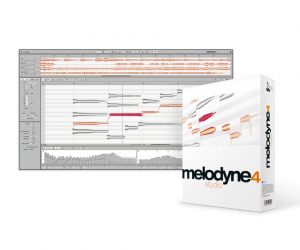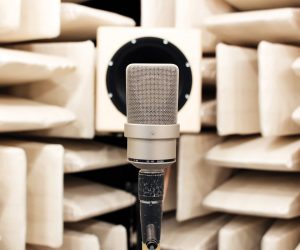
I’M ALL EARS
Switching from wedges to in-ear monitors is a big decision. So what boxes do you need to tick before taking the plunge?
Text: Christopher Holder
On paper, switching to in-ear monitoring (IEM) is a very attractive proposition. We know what a great monitor mix can do for a performance. When the sound coming out of the wedges feels ‘right’, then all is well with the world and it’s easier to lose yourself in the performance. Trouble is, for every night the on-stage sound is great, there are just as many gigs where the monitors aren’t cutting it. In-ear monitoring promises to give you the mix you want night-in, night-out, or so the story goes…
But is it as easy as all that? Is every band or muso better off switching to ‘ears’? Certainly not, it’s not that simple. But equally, nor is it simply the case that a hard rockin’ band = wedges, and a folk duo = IEM. There are plenty of heavy rockers out there who have made the switch to IEMs. Why? Because if you get in-ear monitoring right it has the potential to improve your sound regardless of whether you’re scissor-kicking from the drum riser or weaving daisy chains between mandolin solos. Here’s how:
In-ear monitoring has a number of advantages including:
• Better performances because you’re finally getting the mix you want in hi-fi stereophonic sound!
• Vocalists love IEM because they’re not screaming to be heard over the stage sound. It saves their voices and allows them to pitch better.
• Protecting your hearing– bad tinnitus can literally drive people insane, so a controlled IEM mix is far better for your health and longevity than a 120dB wedge-fest.
• Portability – if you’re touring with your own rig, you won’t need to lug a truckload of wedges, amps and processors about.
• Clean up your stage sound – for some pub/club gigs there’s often more sound blasting from monitors than from the house PA. Take the wedges out of the equation and you instantly have better separation and hi-fidelity in your FOH mix.
• Get an even coverage all over the stage. It means you’re not rooted to the spot to get the foldback you want.
TAKING THE PLUNGE
Let’s say your band is on the up and up; you have regular gigs and maybe you’ve already got a couple of dates lined up interstate. As a result, maybe you’re thinking that now’s a good time to take a serious look at your monitoring situation. How do you make this decision, and if you’re thinking of switching to in-ears, what are the pitfalls of making this substantial investment work?
Jumping onto the IEM bandwagon isn’t a decision to be taken lightly. It’s not like giving a new microphone a burl, for example, rather, investing in IEM represents a fundamental shift in how you go about constructing your stage sound.
As a group it’s worth discussing the pros and cons and whether everyone is willing to give the plan its best chance of success. Scepticism of something new is totally understandable but out-and-out antagonism will mean you may need to rethink. By which I mean, if the guitarist has a wall of Marshalls and won’t countenance turning them down, then the advantages of IEM – cleaner, clearer, more articluate FOH sound, for starters – will be swamped by the one objector.
So what’s the best way to make the transition to ears as painless as possible?
• If you’ve invested in custom moulds then it’ll take time to get, um, accustomed to them. Plug your moulds into your iPod, wear them while you’re shopping. Fiddle with them to find the ‘sweetspot’ – the point at which you’re happiest with the tonal balance and sound.
• Rehearse with your IEM system: if you’re planning to tour with IEMs, then it makes sense to rehearse with them. Use your rehearsals to properly emulate a stage environment as best you can.
• Experiment with your mix: the sort of IEM mix you pull can be vastly different to conventional wedges. For starters you can mix in stereo and begin to craft a mix with panning and separation. In other words, it isn’t just about varying degrees of loudness anymore.
I spoke to Jands Production Services’ IEM guru, Bob Daniels, recently about in-ear mixing and he reiterated the challenge for the monitor engineer…
Bob Daniels: It’s your job as engineer to turn an artificial situation – an artist shut off from the world with little speakers shoved in their ears – into a realistic one, creating a believable facsimile of the environment around them in their head. If an artist is about to head out on stage and asks you if the PA is on, and you’ve got to take a mould out to check, well then you’re probably on the right track
I reckon IEM is the best thing to happen to monitor engineers. You can craft mixes and the job’s no longer just about fighting feedback and squeezing a dB here and there out of your stage monitors. The downside is there’s nowhere to hide. The artist will be able to more easily hear any stuffups or if you’re not up to scratch. But there are a couple of tools that’ll help you pull a realistic mix for them.
Reverb: Give the vocalist some reverb (1s – 1.8s). You don’t want to be swimming in it and it’ll be up to the artist to determine how much they want but it helps give them a sense of space.
Compression: Some compression, especially on the vocals, helps to tame the mix and keep things more contained and even.
Ambience mics: Not a luxury, a prerequisite. Even for small pub gigs you want ambience mics. Without them the artists feel cut off and isolated. Pan the ambience mics to provide proper localisation. If someone shouts out from the crowd you want to be able to pick where it’s coming from in your ears.
ONE EAR V TWO
You might think that having one ‘ear’ is better than two. That way you hear the mix and with the other you get a sense of the space you’re in – you don’t feel quite so cut off. In reality, pulling one ear out is generally a sign of problems. IEM works best when you shut off the outside world and then recreate the parts you want, balanced the way you want – fashioning an idealised version of the venue around you without the nasties. Take one ear out and you’re ruining the illusion. Bob Daniels agrees:
Bob Daniels: If I have artists who wants to try using just one ear, it normally means they’ve had some bad in-ear experiences – I try and steer them away from doing that. The one-ear brigade find it harder to lock into the venue they’re in – it takes longer to acclimatise. There’s the later arrivals (delays) as well: you have the IEM mix fed into one side of your brain and then milliseconds later you’re either hearing a wedge mix or the room, and in my opinion that’s just too many numbers for the brain to crunch.
If I have an artist wanting to switch to one ear I also try this experiment on them: turn the mix up in the one ear until they’re happy; then put the other mould in. I find they invariably turn the two-ear mix down on their pack. I’ll then explain to them the harm they’re doing to that one ear by loading it with that extra level.
TOOLING UP
Getting yourself tooled up for IEM might seem like a significant outlay, but when you consider a concert-spec floor monitor system is over $5000 (and that’s without the amp and processing), then ‘ears’ suddenly don’t look quite so pricey. If you want to be totally self-sufficient then buying a monitoring console is a great idea. Thankfully digital consoles are an absolute godsend for IEM. Compression and gates on every channel along with onboard effects are all pretty standard and will save you rack space and the additional outboard cost. IEM chews up stereo buses so just beware – six auxiliaries will only provide you with three IEM mixes, and bus outputs are soon swallowed up.
Aviom pioneered the personal monitoring system and they can be a good option. These systems – Hear Technologies and Roland also do versions of this concept – work by sending each personal mixing station various components of your mix – say guitars, vocals, stereo mix of keyboards, drum overheads, kick and snare – and each performer can tweak the mix themselves. You can combine a system like this with in-ear monitoring so that, as a performer, you have full control over your own monitoring destiny.
IEM may not be a rich man’s game anymore but the outlay isn’t chump’s change either – IEM still represents a significant investment, not only in time but in your whole approach to gigging. But it’s worth considering. Whether it’s U2, The Offspring or Kylie, most concert touring acts have now made the IEM switch, so if you’re ambitious and committed to producing a world-class sound then it’s inevitable that at some point you’ll need to grapple with the question of when you make the leap. Just don’t go in half-hearted as I can guarantee you’ll be underwhelmed and out of pocket.

















RESPONSES